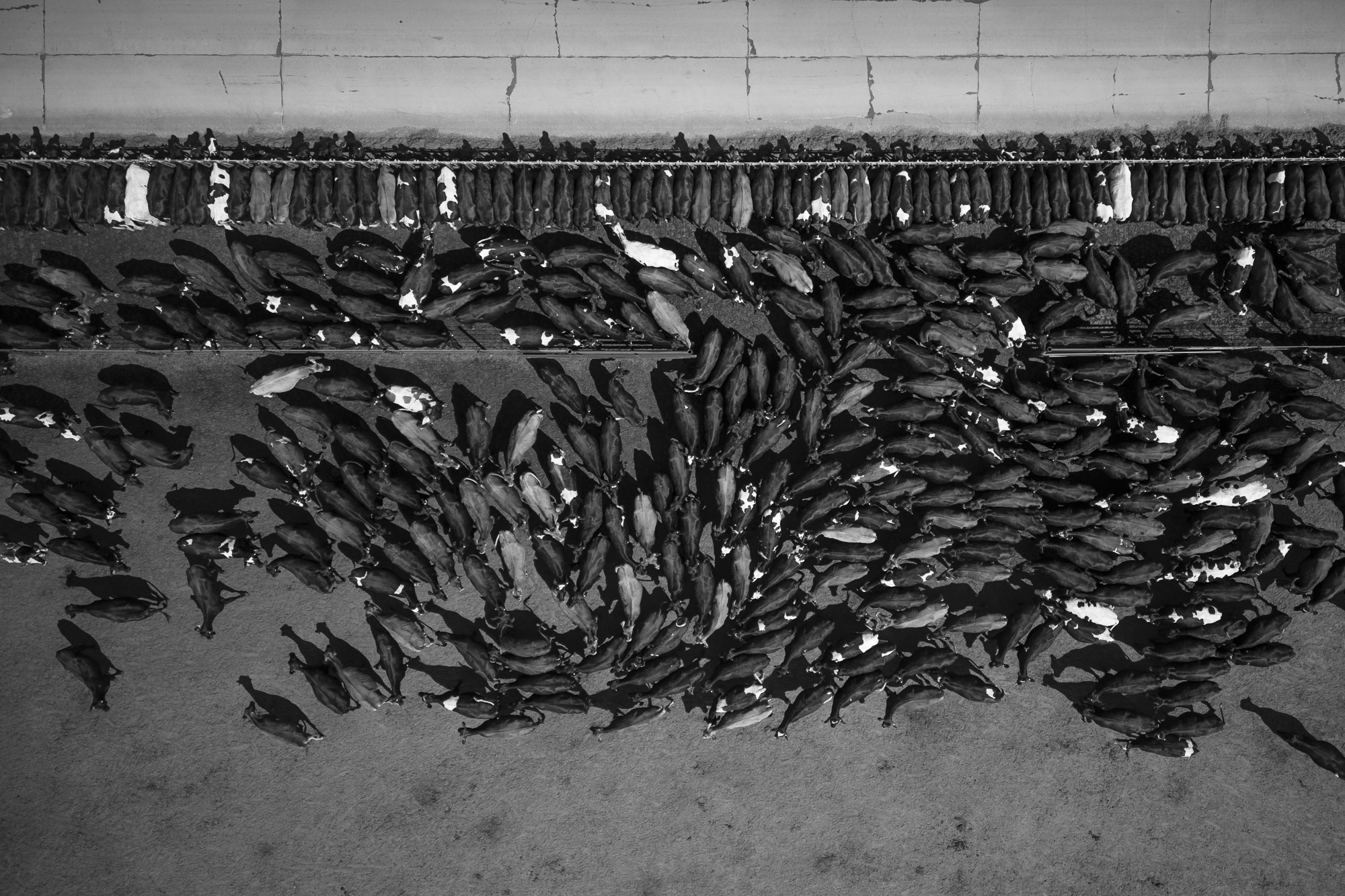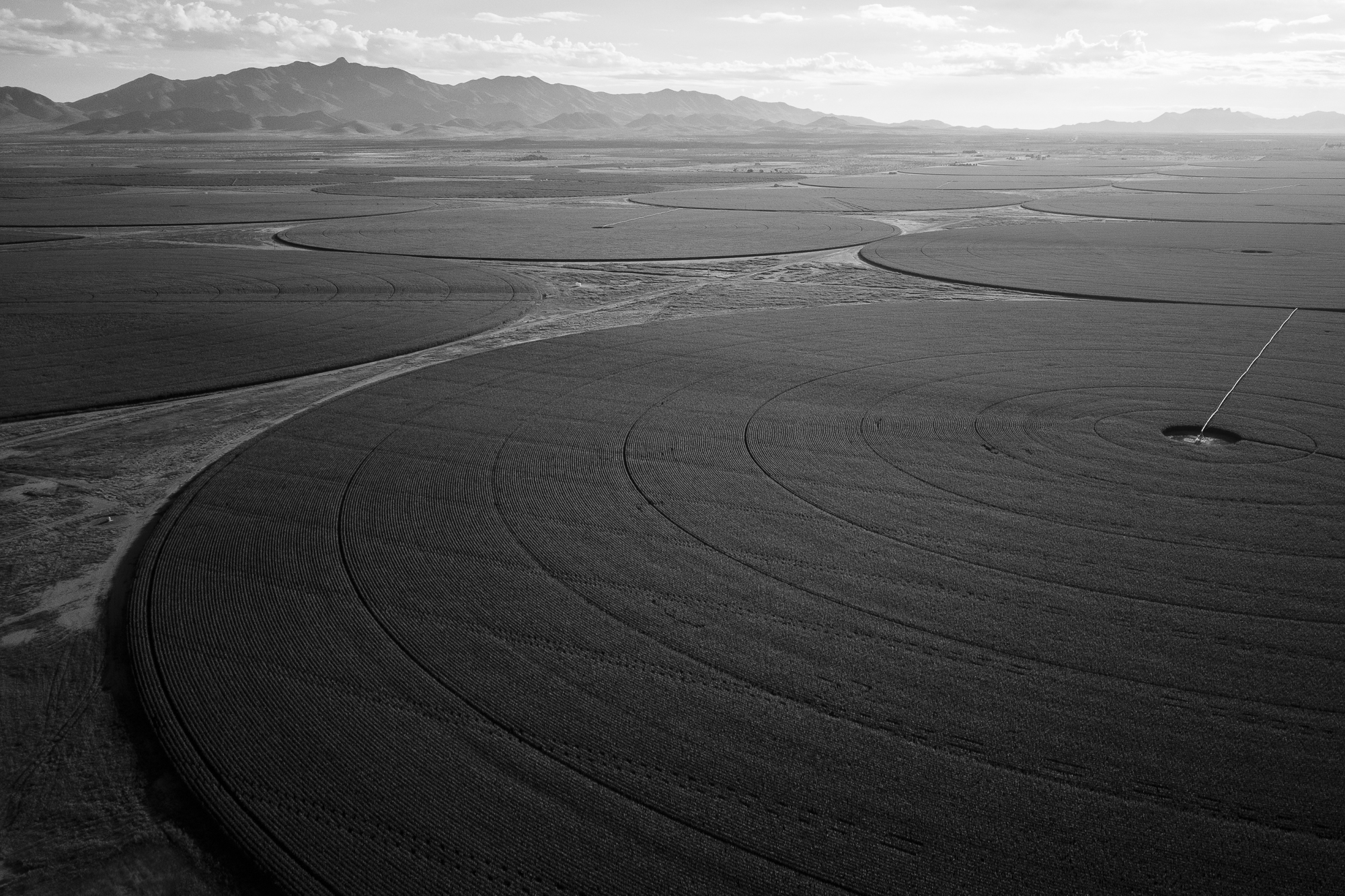Good morning, Parched readers. Jake Bittle here. This week, I’m giving you an inside look at a feature we published at Grist today, examining how drought created political unrest in a rural county in Arizona.
Way back in April, I heard about a group of activists in remote southeast Arizona who were gathering signatures for a ballot initiative to establish stricter water regulations in their area. Agriculture-heavy rural areas of the U.S. West tend to be averse to water regulations, and campaigns to control water usually don’t get that much traction. But this one looked like it had a shot.

Anje Duckels checks on some of the plants in the garden at her home in Pearce, Arizona. Grist / Roberto (Bear) Guerra
As I started talking to people in Cochise County, it became clear that the story was about more than just a shift in one county’s local water policy — it was about how a shortage of water had ripped a community apart at the seams. Like many rural areas, Cochise County relies entirely on groundwater pumped up from subterranean wells, but in recent years the aquifers that hold this water have started to go dry. Backyard wells failed, leaving many residents forced to haul water to their homes from distant municipal wells. Other neighbors have simply abandoned their properties and skipped town.

Aerial views of the Coronado Dairy farm. Grist / Eliseu Cavalcante and Roberto (Bear) Guerra
When I asked who they thought was responsible for the crisis, a lot of people pointed me toward Riverview Dairy, a massive agricultural conglomerate that arrived in Cochise County around eight years ago. The dairy has drilled numerous wells that extend thousands of feet underground, and it now pumps many thousands of times more water than the average individual or even a small farmer. In the eyes of many residents and water experts, this new surge of pumping has drained the area’s aquifers, driving shortages among residents and opening up huge subsidence fissures in local roadways.
The water crisis in Cochise County is not unique. Other parts of Arizona have seen their groundwater vanish as large agribusiness firms move in, and a region-wide lack of rainfall has helped make already fragile aquifers even more vulnerable to aggressive pumping. But it was only in Cochise County that the water crisis created such an upswell of political engagement. The area is known for being libertarian and isolated, and most people normally keep to themselves, but the antagonism against Riverview has brought hundreds of residents together for an unprecedented pressure campaign against the dairy and the local politicians who support it. The surprising momentum behind the new ballot initiative campaign has also created a backlash from people in the county who worry that regulations will hurt small farmers. In recent weeks, these tensions have reached a boiling point.

Riverview-owned crops fan out near Kansas Settlement Road near Willcox, Arizona. Grist / Eliseu Cavalcante and Roberto (Bear) Guerra
Cochise County voters will go to the polls two weeks from today to decide whether they want to impose new restrictions on Riverview and other large water users. The result will tell us a lot about how the Western drought crisis is affecting groundwater-dependent communities. Who do people blame when they lose their water, and how far will they go to strike back at the agricultural firms that help sustain their local economies?
I hope you’ll take a look at the full story, which also features gorgeous images and drone videography by photographer Bear Guerra. Thanks for reading.
What we’re reading:
How a Utah utility is helping an Estonian oil company hoard Colorado River water
Naveena Sadasivam, Grist
◆ Read more
New mega reservoir in final planning phase for California
Tom Vacar, KTVU
◆ Read more
Through Pacific NW drought and downpour, what will happen to the salmon?
Isabella Breda, Seattle Times
◆ Read more
Cities want more trees. Drought is complicating their efforts.
Blanca Begert, Grist
◆ Read more
‘It’s life or death’: Why one Hawaii island’s severe drought problem should scare everyone
Kaila Yu, SF Gate
◆ Read more
NOAA sees no winter drought relief across parched West
Jennifer Yachnin, E&E News
◆ Read more


